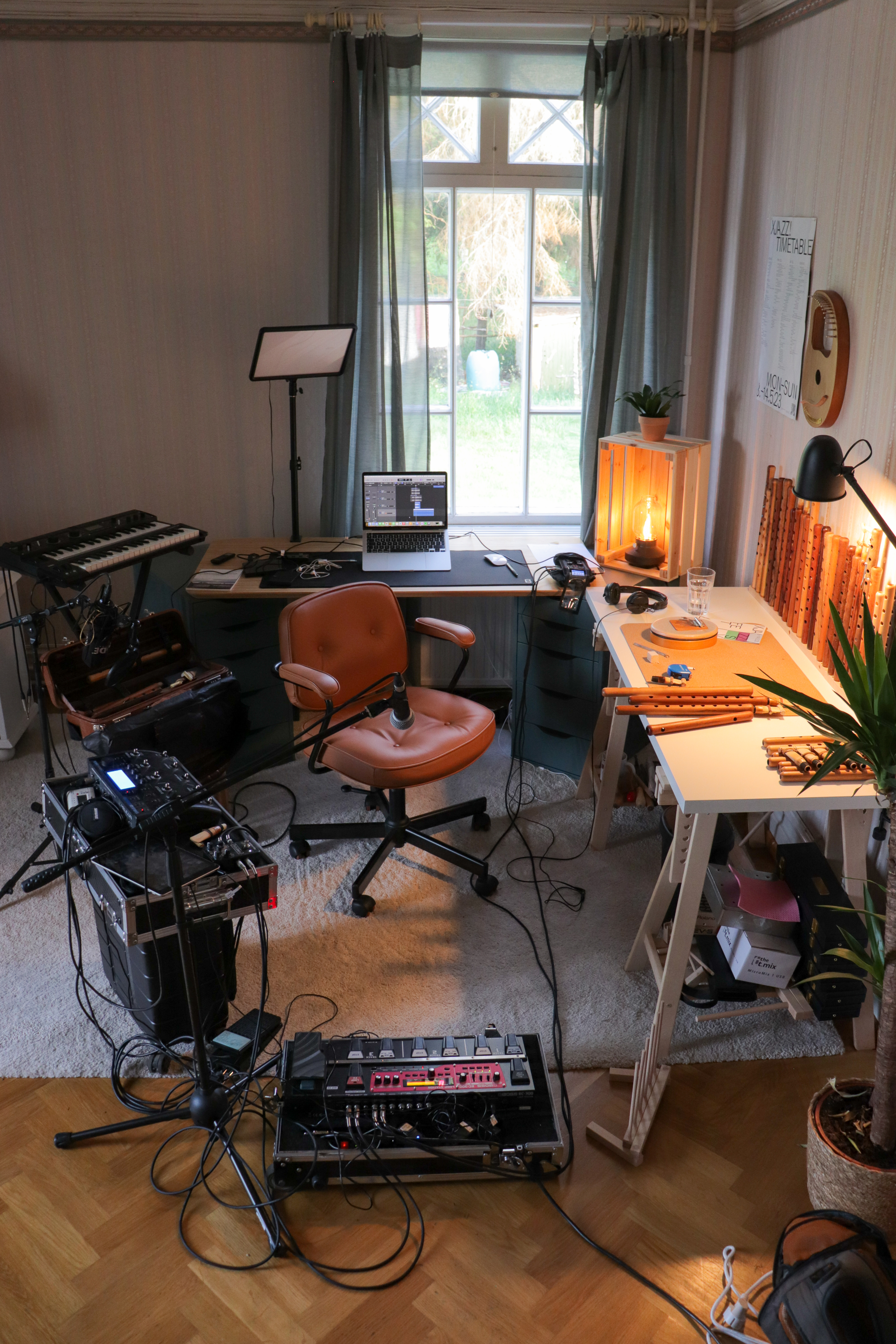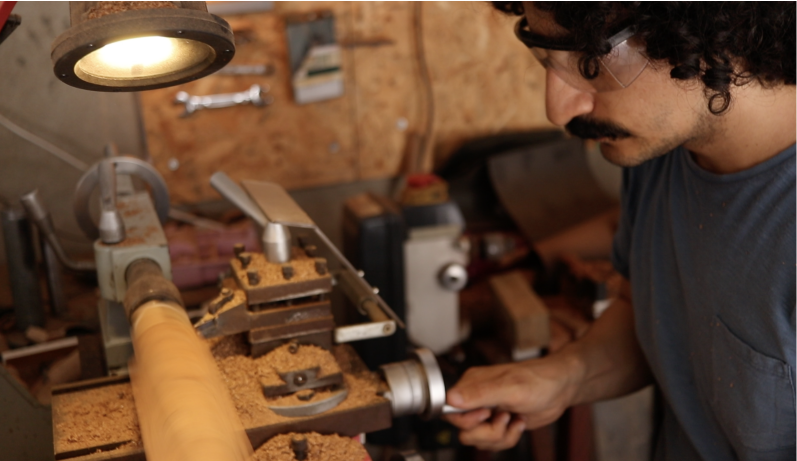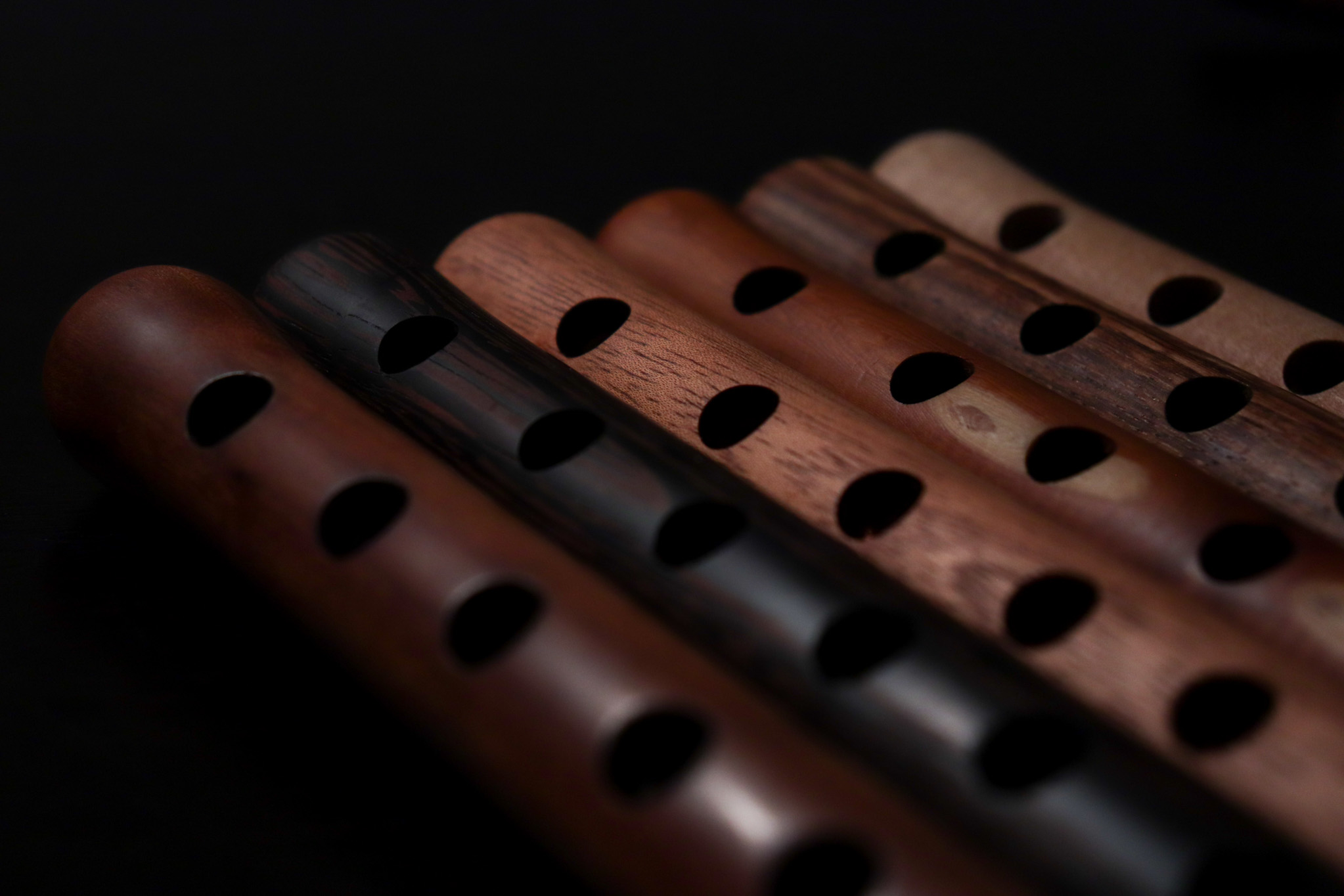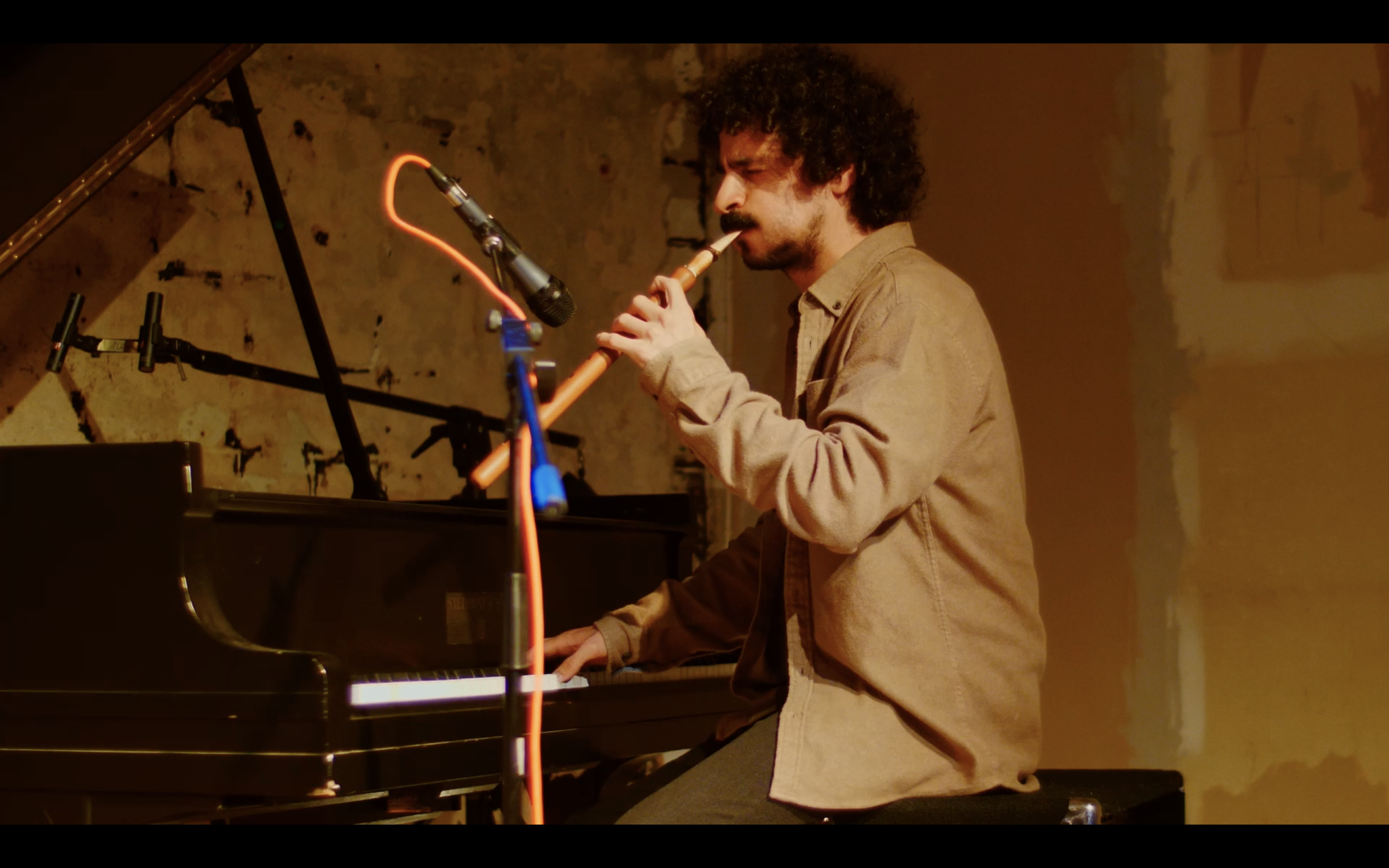2.4 Extended Techniques
The playing technique of the duduk is unique. I have been teaching the duduk online to people from all over the world. Some of these people were players of other wind instruments like trumpet, saxophone, clarinet, flute and uillean pipes. I had a chance to discuss the technique of their instrument with them. I also experienced how wind players had more difficulty adapting to the technique of the duduk because the duduk has a different technique. For example, while most wind players use a lot of muscles in the mouth area and use the lips tensely, the duduk requires a relaxed lip and mouth position, inflated cheeks, vibrato through moving the jaw, and articulation through moving the jaw instead of only tonguing. I have never seen works on extended techniques for the duduk, therefore I needed to look at works on other wind instruments.
I believe exploring extended techniques will help me to have more expressions and open doors for new music. Moreover, this work may give more inspiration for further composers and encourage them to compose more for the duduk. Douglas Hill states that extended techniques can be considered "additional vocabulary for the instrument to be used when an idea cannot be better expressed in any other way." (Hill, 1983, p.7)
Douglas Hill also mentions "Upon reading the accounts of many of the famous works for horn, one will find that most of them were inspired by, dedicated to, or written for a specific performer. Today we have a few horn players who have consciously continued this important tradition, but we also have a large number who ignore or denounce invention and experimentation and openly discourage composers from utilizing the numerous possibilities of our highly versatile instrument. There is hope that this attitude is changing with the rapid growth of young talent. If young and enthusiastic horn players are encouraged to be receptive to new techniques there will be an increase in our repertoire, rather than a continuation of this period of seeming disinterest." (Hill, 1983, p.7)
2.7 Text Editing
In the process of writing this thesis, I initially drafted the text in both Turkish and English, subsequently undertaking the task of translation and organization utilizing the resources available on ChatGPT. The content was generated independently, without reliance on information sourced from ChatGPT. Rather, the platform was utilized for text correction and refinement.




